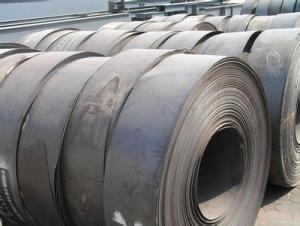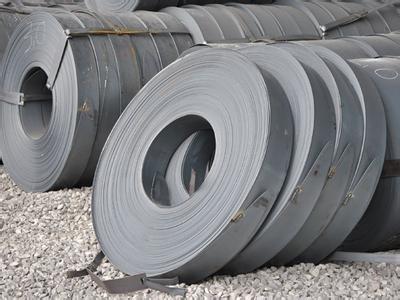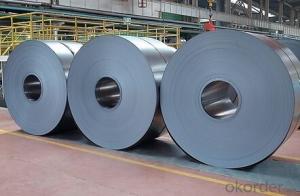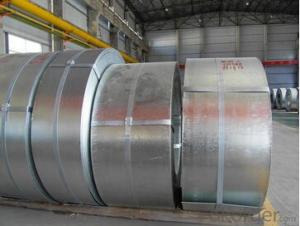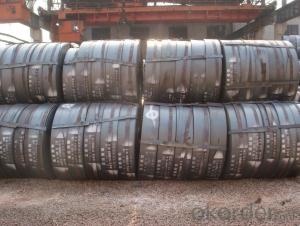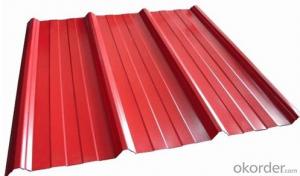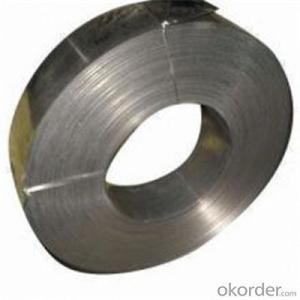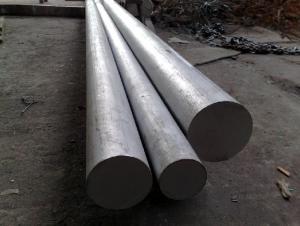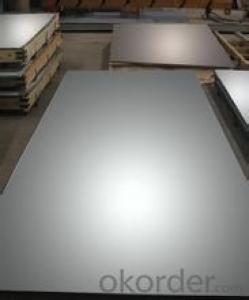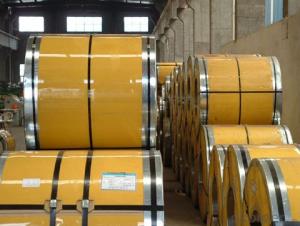High grade hot rolled strip
- Loading Port:
- China Main Port
- Payment Terms:
- TT OR LC
- Min Order Qty:
- -
- Supply Capability:
- -
OKorder Service Pledge
OKorder Financial Service
You Might Also Like
Strip is all kinds of steel rolling enterprises in order to adapt to different industrial sectors industrialized production of various kinds of metal or the needs of machinery products and the production of a narrow and long steel plate. Width of strip steel is also called the steel belt, it is within the 1300 mm, length according to the size of each roll is slightly different.
define
Strip roll supply commonly, have high dimensional accuracy, good surface quality, easy to machining, saving materials, etc. With steel plate, the same strip according to the material divided into two categories, ordinary steel strip and high quality steel strip; According to the machining method cent two kinds of hot rolled strip steel, cold rolled strips.
Strip steel is widely used in the production of welded steel pipe and cold bend section steel billet, manufacturing bicycle frame, wheels, clamp, washer, spring leaf, saw blade, metal products and blades, etc.
The process flow
The editor
Cold-rolled strip steel production process is commonly: pickling - rolling - processing lubrication to annealing, flat - shear - packaging.
Cold-rolled strip steel, pickling, rolling, annealing, rolling size synchronous lubrication, rust-proof oil - flat scale - polishing - packing
Heating furnace of hot rolled strip steel: - phosphorus removal machine, roughing mill, phosphorus removal machine, finishing mill, surface quality inspection instrument - layer of cold - reel, baling machine, injection machine - volume base slab
Inside furnace hot rolling strip production process: first, the temperature is up to the required rolling temperature, and is entered into the roughing roller on the slab of phosphorus removal machine of iron oxide, and then into the roughing rolling unit width and thickness of strip rolling, and then by the roller conveyor to finishing phosphorus removal machine to process the iron oxide on the strip surface, after entering the finishing rolling unit on the thickness and width of the strip is more precision rolling, strip steel by roller through a layer of cold surface temperature before coiling, after strict control into the reel be coil last baling, spray into the packaging volume of inventory.
- Q: Do steel strips come in different lengths?
- Yes, steel strips come in different lengths to accommodate various needs and applications.
- Q: Are steel strips suitable for making conveyor belts or chains?
- Yes, steel strips are suitable for making conveyor belts or chains. Steel is a durable and strong material that can withstand heavy loads and high temperatures. It provides excellent resistance to wear and tear, making it ideal for industrial applications such as conveyor belts or chains that require continuous movement and handling of materials.
- Q: Can steel strips be used in the production of signage?
- Yes, steel strips can be used in the production of signage. Steel strips offer durability and strength, making them suitable for outdoor signage applications. Additionally, steel strips can be easily shaped and manipulated to create custom designs and lettering for signage.
- Q: What are the different edge finishes for steel strips?
- Some common edge finishes for steel strips include mill edge, slit edge, deburred edge, rounded edge, and sheared edge.
- Q: What are the main factors affecting the wear resistance of steel strips?
- The main factors affecting the wear resistance of steel strips are the composition of the steel, the hardness of the steel, the presence of impurities or defects in the steel, the surface finish of the steel, and the operating conditions such as load, speed, and temperature.
- Q: What are the factors that affect the electrical conductivity of steel strips?
- There are several factors that can affect the electrical conductivity of steel strips. 1. Composition: The composition of the steel strip plays a significant role in its electrical conductivity. Steel is primarily composed of iron, but it also contains other elements such as carbon, manganese, silicon, and various alloying elements. These elements can affect the electrical conductivity of the steel strip. For example, high carbon content can decrease electrical conductivity, while certain alloying elements like copper or nickel can increase conductivity. 2. Impurities: The presence of impurities in the steel strip can also impact its electrical conductivity. Impurities such as sulfur, phosphorus, and oxygen can introduce resistance to the flow of electrical current, thereby reducing conductivity. The level of impurities in the steel, therefore, needs to be minimized during the manufacturing process. 3. Grain size: The grain size of the steel strip can influence its electrical conductivity. Generally, smaller grain sizes have higher electrical conductivity due to the increased number of grain boundaries, which facilitate the movement of electrons. Heat treatment processes can be employed to control and optimize the grain size of the steel strip. 4. Temperature: Electrical conductivity of steel strips can be affected by temperature. As the temperature increases, the electrical resistance of the steel also increases, leading to a decrease in conductivity. This phenomenon is known as the temperature coefficient of resistance. It is important to consider the operating temperature range when selecting a steel strip for electrical applications. 5. Surface conditions: The surface condition of the steel strip can impact its electrical conductivity. Factors such as surface roughness, oxide layers, and contamination can introduce resistance, thereby reducing conductivity. Proper cleaning and surface treatment methods can be employed to improve the electrical conductivity of steel strips. 6. Thickness and cross-sectional area: The thickness and cross-sectional area of the steel strip can influence its electrical conductivity. Thicker strips generally have lower conductivity due to the increased path length for electron flow. Similarly, larger cross-sectional areas allow for more efficient electron movement, resulting in higher conductivity. It is crucial to consider these factors when designing and selecting steel strips for electrical applications, as they can greatly impact the overall performance and efficiency of electrical systems.
- Q: How are steel strips used in the production of consumer electronics?
- Steel strips have various applications in the production of consumer electronics. Firstly, they are commonly used as components for manufacturing electronic device casings or housings. By shaping and sizing the strips, they create a sturdy structure that protects the internal components. Moreover, steel strips are utilized in the production of brackets, frames, and other structural components within consumer electronics. These strips are cut, shaped, and welded to create supports and reinforcements that secure and stabilize different parts of the electronic device. In addition, steel strips are employed in the production of connectors and electrical contacts. They are precisely cut and treated to ensure proper conductivity and durability. These strips establish electrical connections within the device, enabling the flow of current between components. In summary, steel strips are essential in the production of consumer electronics as they provide strength, durability, and functionality to the final product. Their versatility and ability to be formed into various shapes make them valuable in the manufacturing process, ensuring the reliability and longevity of electronic devices.
- Q: Can steel strips be used in packaging applications?
- Yes, steel strips can be used in packaging applications. They are commonly used for securing and bundling materials, such as pallets, crates, and heavy machinery, as they provide strength, durability, and resistance to damage. Steel strips are able to withstand high tension and can be easily fastened with appropriate tools, making them suitable for various packaging needs.
- Q: Can steel strips be used for making automotive suspension components?
- Yes, steel strips can be used for making automotive suspension components. Steel is a common material choice for suspension components due to its strength, durability, and ability to withstand high loads and impacts. Steel strips can be formed, welded, and shaped to create various suspension parts such as coil springs, leaf springs, and stabilizer bars.
- Q: Are steel strips suitable for the production of metal cabinets?
- Yes, steel strips are suitable for the production of metal cabinets. Steel strips are known for their strength and durability, making them an ideal choice for constructing cabinets that need to withstand heavy loads and provide long-lasting storage solutions. Additionally, steel strips can be easily shaped and welded to create custom cabinet designs, allowing for flexibility in the manufacturing process.
Send your message to us
High grade hot rolled strip
- Loading Port:
- China Main Port
- Payment Terms:
- TT OR LC
- Min Order Qty:
- -
- Supply Capability:
- -
OKorder Service Pledge
OKorder Financial Service
Similar products
Hot products
Hot Searches
Related keywords
